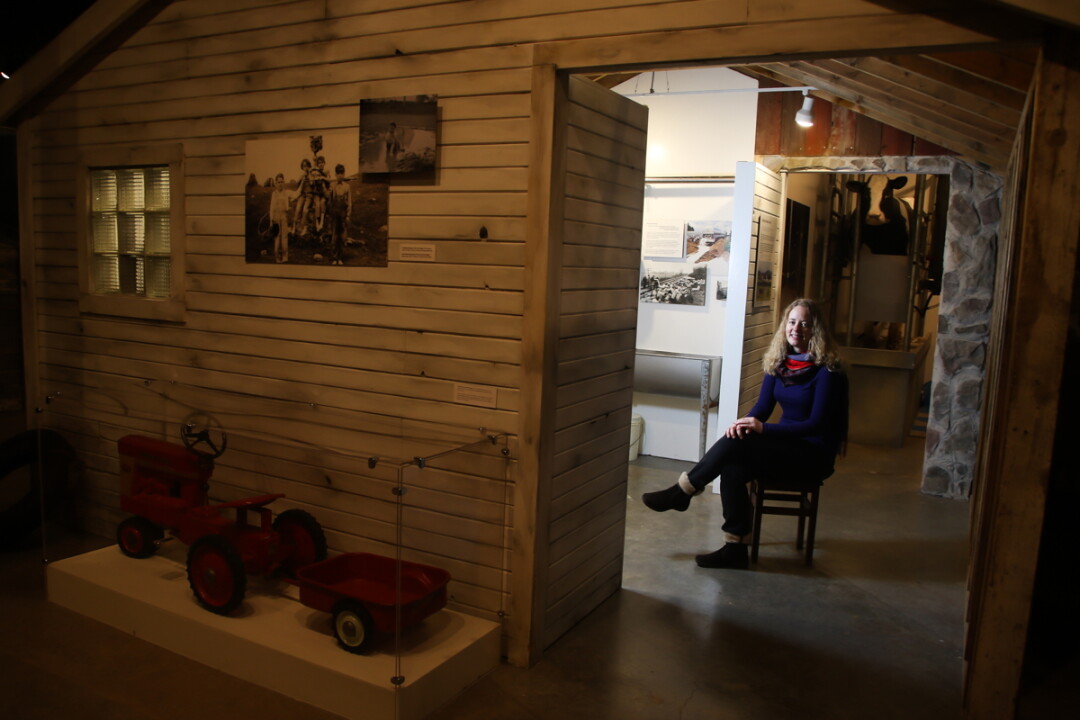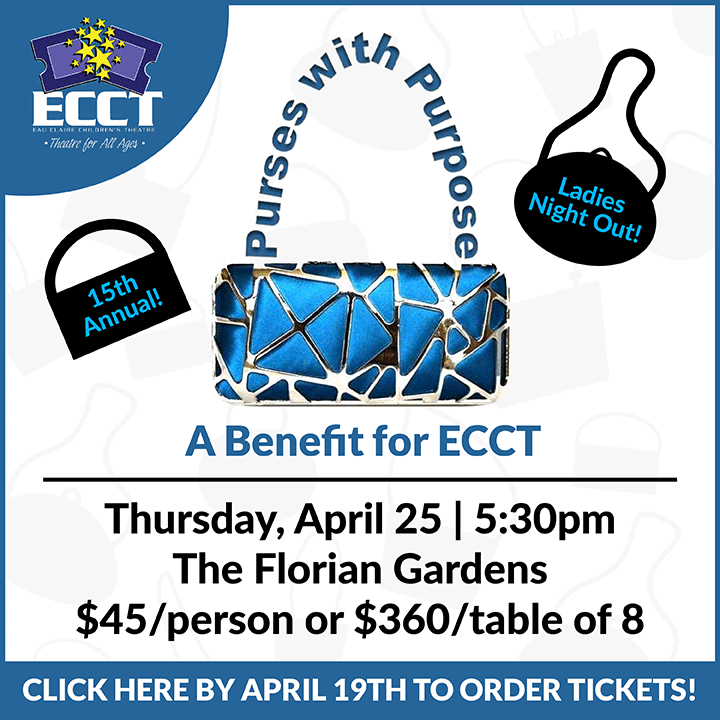Little House, Only Littler
EC author uses erasure to create new work out of children’s lit classics
Hope Greene, photos by Andrea Paulseth |

Emily Anderson spent an undisclosed amount of time as a child walking around with a long brown skirt over her blonde head, pretending to be Laura Ingalls Wilder. As an adult, she owns not one, but two actual sunbonnets, and is heading to Laurapalooza by her own free choice. A dedicated lover of the log cabin, butter churn, and calico life, she spent the last four years erasing every Little House book in the series.
Burning a book is an act of violence. Erasing these books was an act of love. Anderson grew up in Eau Claire, loving the Little House books: the sweet family against all odds, the precise descriptions of careful tasks, the cozy perfection of the illustrations. She loved to visit the Chippewa Valley Museum and feel herself part of that history, part of that living story which began in nearby Pepin at a little log cabin in the big woods. Anderson studied writing in Chicago and remembers, “When I was in grad school I found for comfort I was always re-reading these books when I felt stressed out and overwhelmed, and I started playing with the text and copying it down because I wanted to feel close to something that felt so familiar to me, so much like home.”
There are certain things you can do and certain things that you can’t, or that you’re silenced on. That’s really fun and also frustrating. – author Emily Anderson, on using the text of the Little House series to create her new book, Little
But in her growing up, reading and learning about her favorite stories, it became apparent to her how very much of the story of that time period, and of the Ingalls family itself was purposefully left out, glossed over, or outright fabricated. She spoke of learning that the rosy image of bootstrapping through the powers of gumption and hand-sewn piles of poplin was carefully constructed by a politically active Rose Wilder Lane, Laura Ingalls Wilder’s daughter, in response to the New Deal, the social safety net installed in the 1930s. And to romanticize the frontier spirit, the brutal facets of terrible uncertainty, mortal danger, broken lives, broken promises, and broken civilizations were pulled back, smoothed and tied down in a big glossy bun.
Having both a strong intellect and a strong heart, Anderson was unwilling to either forget what she had learned or to turn against the stories: “I absolutely love her frontier and all of the daily life and the daily chores and the loving family that is so wonderful and beautiful, but it’s a picture that is politically motivated, and it absolutely excludes the point of view of Native American people whose lands were being taken.” She asks, “How can you love something while also being aware of things that aren’t good about it? How do you maintain that relationship?” So in search of an answer, Anderson began erasing her way to her first published book, Little.
Erasure is a literary form that involves removing words from an existing text to create a new text. Anderson describes the difficulty of the process as a “tension between taking liberties with somebody else’s work and being limited by somebody else’s work.” To use a prairie life metaphor, it’s something like cutting up a dress to make a quilt. If there are red dots in the fabric you can make a red line in your quilt. If there’s no red in the dress, there’s no red in your quilt. Like an ingenious pioneer you use what you have at hand; there’s no running out to Gordy’s to buy a vowel. As Anderson says, “There are certain things you can do and certain things that you can’t, or that you’re silenced on. That’s really fun and also frustrating. I’ve heard that called the ‘revenge of the text’ with erasure. It won’t allow you to say certain things, it forces you in certain directions and that’s what’s so exciting about this process. … It feels like a collaboration with a ghost.”
Little is a small volume containing Anderson’s erasures of all nine of Wilder’s Little House novels. The words appear in the order they were in the original books, with an occasional conjunction added. The resulting text is poetic, mischievous, tragic, and very, very clever. With a steady kindness and obvious good will, Anderson brings up from below the surface of the Little House stories glistening vital threads of confusion, domination, sexuality, alienation, uncertainty, and suffering, while still keeping the book upbeat enough to seamlessly include a Michael Landon flip book and a drawing of a scythe-wielding unicorn. The diverse illustrations in the book, made by eight different artists, add another level of unpredictability to the project. “I contacted friends who are visual artists and asked for illustrations because one of the things I really loved about the original books was the illustrations,” Anderson says. “I am absolutely overwhelmed by the variety of different approaches to the source material. … I’m just delighted with it.”
Anderson is currently living in Eau Claire, enjoying the homeyness while finishing her Ph.D. dissertation; you can read more about her work at emily-anderson.net. She and the poet Jose Alvergue will be holding a book reading at the Eau Claire Music School at 3pm Feb. 28. If you go, don’t forget your bonnet and remember not to fidget.




















